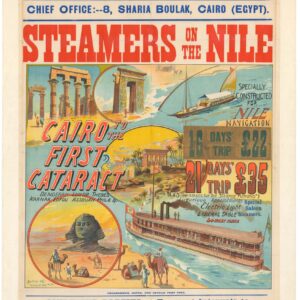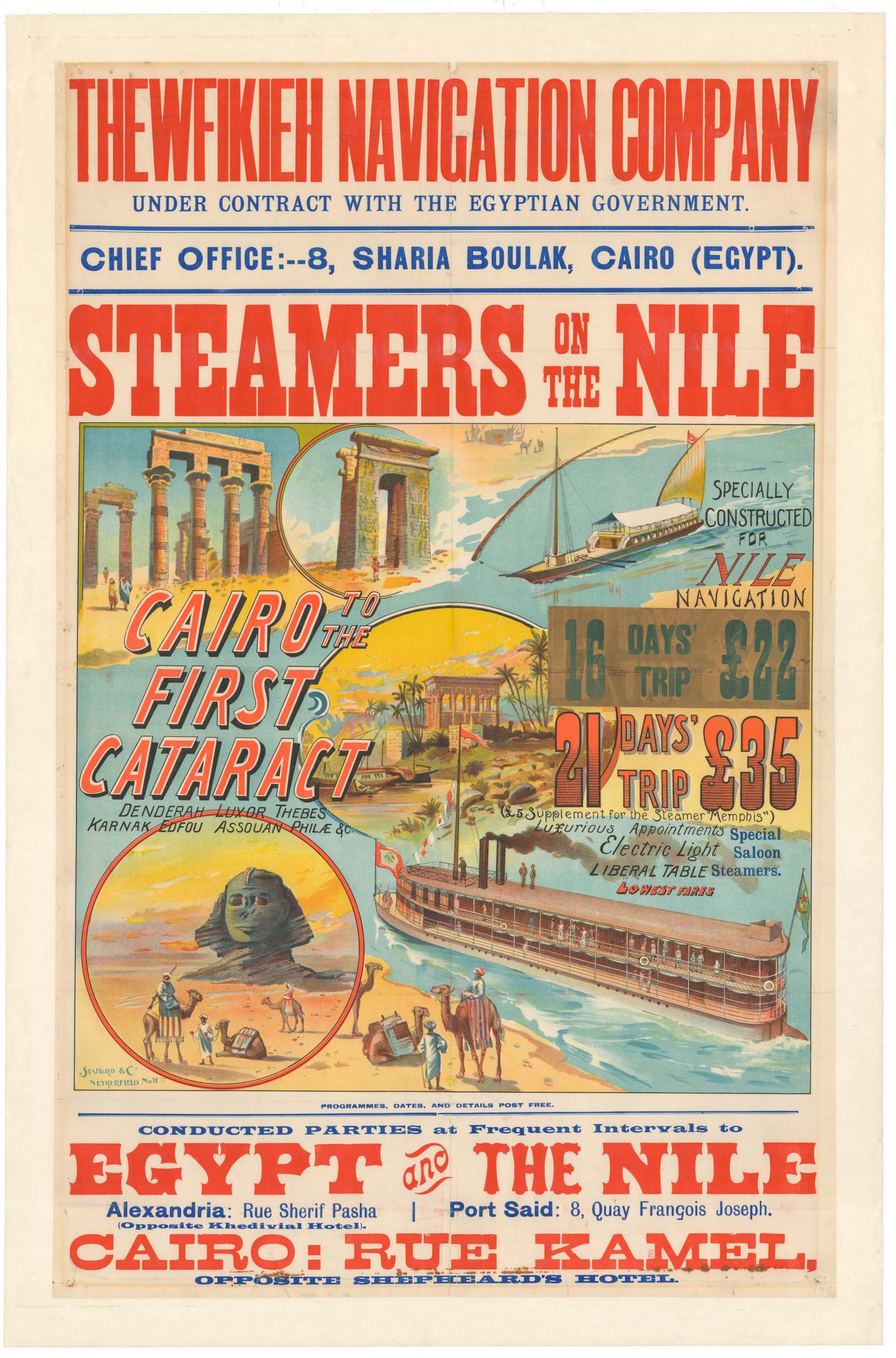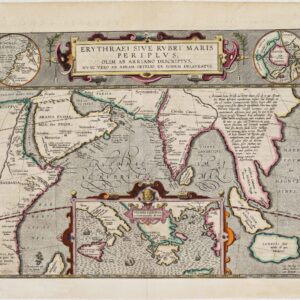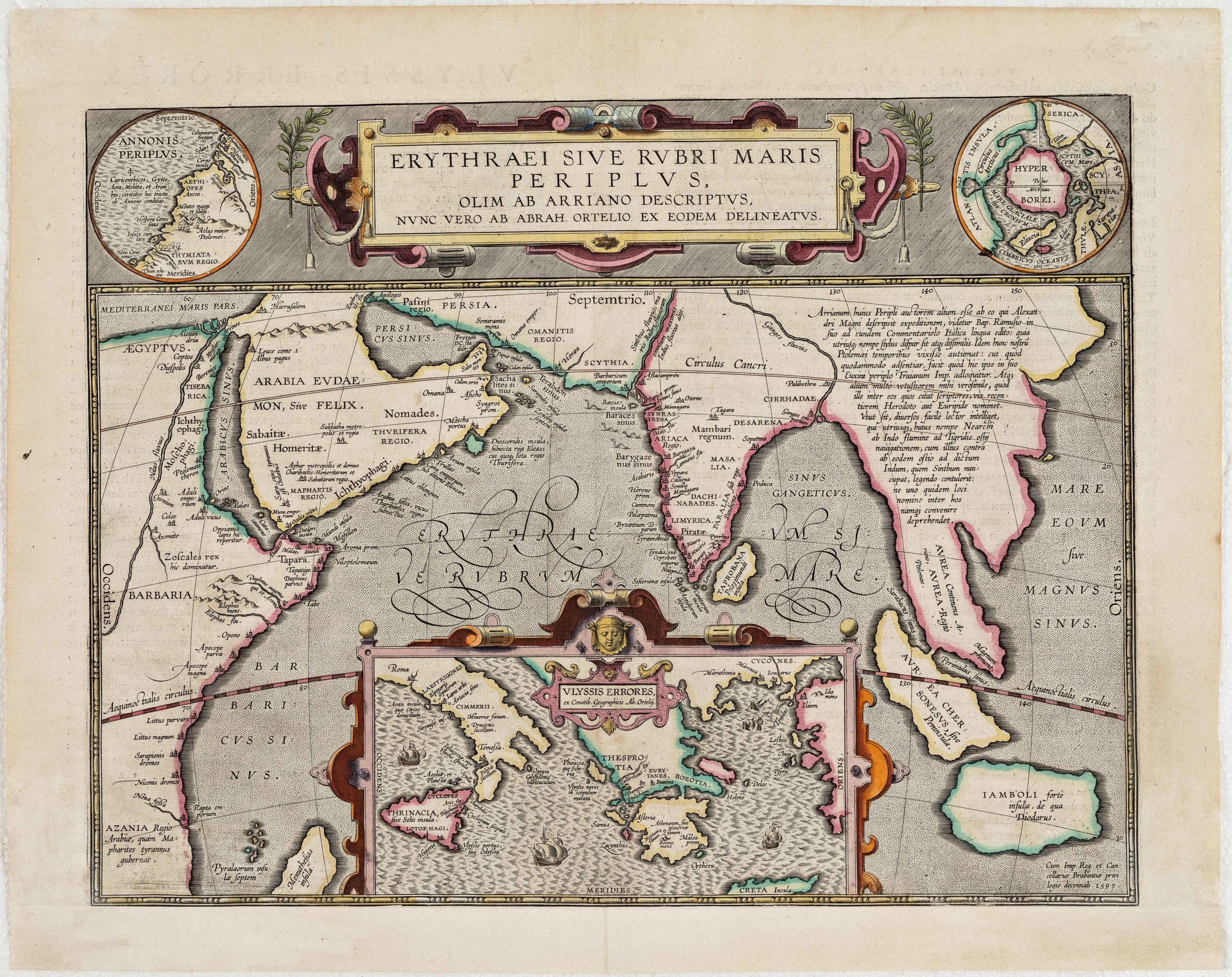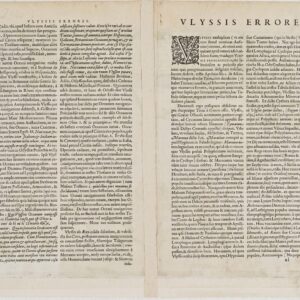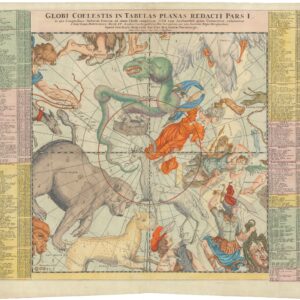Unusual and fascinating look at mapmaking in the 18th century
Mappa geographiae naturalis sive tabella synoptica / inventa et adornata à Matth. Seuttero. S. Caes. Maj. geogr. Aug.
Out of stock
Description
This is a rare cartographic curiosity designed to illustrate the map drawing process. It consists of an imaginary map with a variety of cultural, geographical, and physical features designed to instruct would-be cartographers in the mapmaker’s art. By creating an imaginary place, a broad range of cartographic characteristics is displayed, including port cities, universities, churches, post roads, rivers, mountains, peninsulas, islands, and more. A variety of fonts, text styles, and symbols demonstrate how to produce well-designed labels. Text is given in both Latin and German.
A large, decorative cartouche – left black and white in the usual Seutter style – features an angel tracing on a globe, alongside natural elements. A lovely, colored compass rose, sailing ships, and sea monsters fill the seas. A pictorial legend labels the map features in German and Latin.
Because this map is not found in the standard Seutter works, it is quite scarce.
Cartographer(s):
Matthäus Seutter (1678-1757) was one of the most important and prolific German map publishers of the 18th century. As a young man, he was an eminent engraver who had been trained under the great Johann Baptist Homann in Nürnberg. In the mid-1720s, he moved to his hometown of Augsburg and set up his own printing and publishing house, specializing in maps. His skill as a cartographer was soon noticed in higher circles, and in 1732 Seutter was appointed Imperial Geographer to Holy Roman Emperor Charles VI. The appointment came after his most famous cartographic publication, the two-volume Atlas Novus Sive Tabulae Geographicae, from 1730.
Like many of his contemporaries, Seutter drew heavily on other mapmakers when compiling his charts. Among his primary sources were the maps of his mentor Homann and the great French cartographers Guillaume Delisle and Nicolas de Fer. When Seutter died in 1757, his son-in-law, Tobias Conrad Lotter, took over the firm.
Condition Description
Some soiling and creasing; short bottom margin.
References
Hill, G. p.58, fig.69; MCC 1 (Tooley - Oddities) #67.
